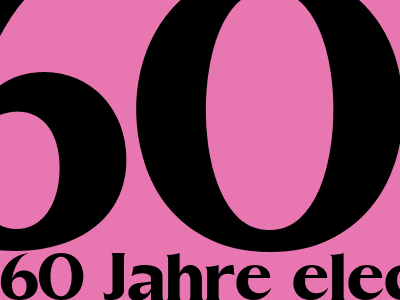
60 Years of electronica: What the Industry Has to Say
The Pioneers
In the early 1960s, a group of pioneers helped launch the field of electronica and established that electronica would be a popular style of music. These included Wendy Carlos, Raymond Scott, and Jean-Jacques Perrey.
Wendy Carlos's "Switched-On Bach" (1968) was one of the first albums to use synthesizers and sequencers to play classical music, while Raymond Scott's career of electronica spanned decades with his first commercially successful electronica song written in 1959. His work was renowned for its innovative use and design of electronic instruments.
Jean-Jacques Perrey and his projects such as "The In Sound From Way Out!" took electronica in a groovy and psychedelic direction, and he made the genre more accessible to the general public.
The 1970s: Growth and Evolution
The 1970s saw the emergence of new electronica subgenres, including ambient, electro, and techno. Artists like Tangerine Dream, Kraftwerk, and Giorgio Moroder pushed the boundaries of the genre.
Tangerine Dream's music was characterized by its long, hypnotic soundscapes, while Kraftwerk's music was more rhythmic and repetitive. Giorgio Moroder's work was used in the soundtracks of several hit films of the time, cementing electronica's status as a major force in popular music.
The 1980s: The Mainstream Breakthrough
In the 1980s, electronica began to achieve mainstream success. Bands like Depeche Mode, New Order, and Eurythmics brought electronica to the top of the charts.
Depeche Mode's music was characterized by its dark and brooding sound, while New Order's music was more upbeat and dance-oriented. Eurythmics' music was a blend of pop and electronica, and they achieved huge worldwide success.
The 1990s: The Rise of Dance Music
The 1990s saw the rise of dance music and spawned subgenres like jungle and drum and bass. Artists like The Prodigy, Aphex Twin, and Björk pushed the boundaries of electronica.
The Prodigy's music was characterized by its aggressive and energetic sound, while Aphex Twin's music was more experimental and challenging. Björk's music was a blend of electronica and traditional Icelandic folk music.
The 2000s: The Digital Revolution
The 2000s saw the digital revolution, which made it easier for electronica artists to produce and distribute their music. This led to a proliferation of new electronica subgenres, including dubstep, trap, and future bass.
Dubstep's music was characterized by its dark and heavy sound, while trap music was more upbeat and dance-oriented. Future bass was a blend of electronica and hip hop, and it became one of the most popular subgenres of the 2010s.
The 2010s: Electronica Today
In the 2010s, electronica continued to evolve and become more diverse. Artists like Skrillex, Diplo, and deadmau5 helped to popularize new subgenres of the genre.
Skrillex's music was characterized by its aggressive and energetic sound, while Diplo's music was more eclectic and experimental. Deadmau5's music was a blend of electronica and progressive house, and he became one of the most successful electronica artists of the decade.
Conclusion
Electronica has come a long way in the past 60 years. It has evolved from a niche genre to one of the most popular genres of music in the world. Electronica has also had a major impact on popular culture, and it continues to inspire new generations of artists and fans.
The future of electronica is bright, and it is sure to continue to evolve and grow in the years to come.